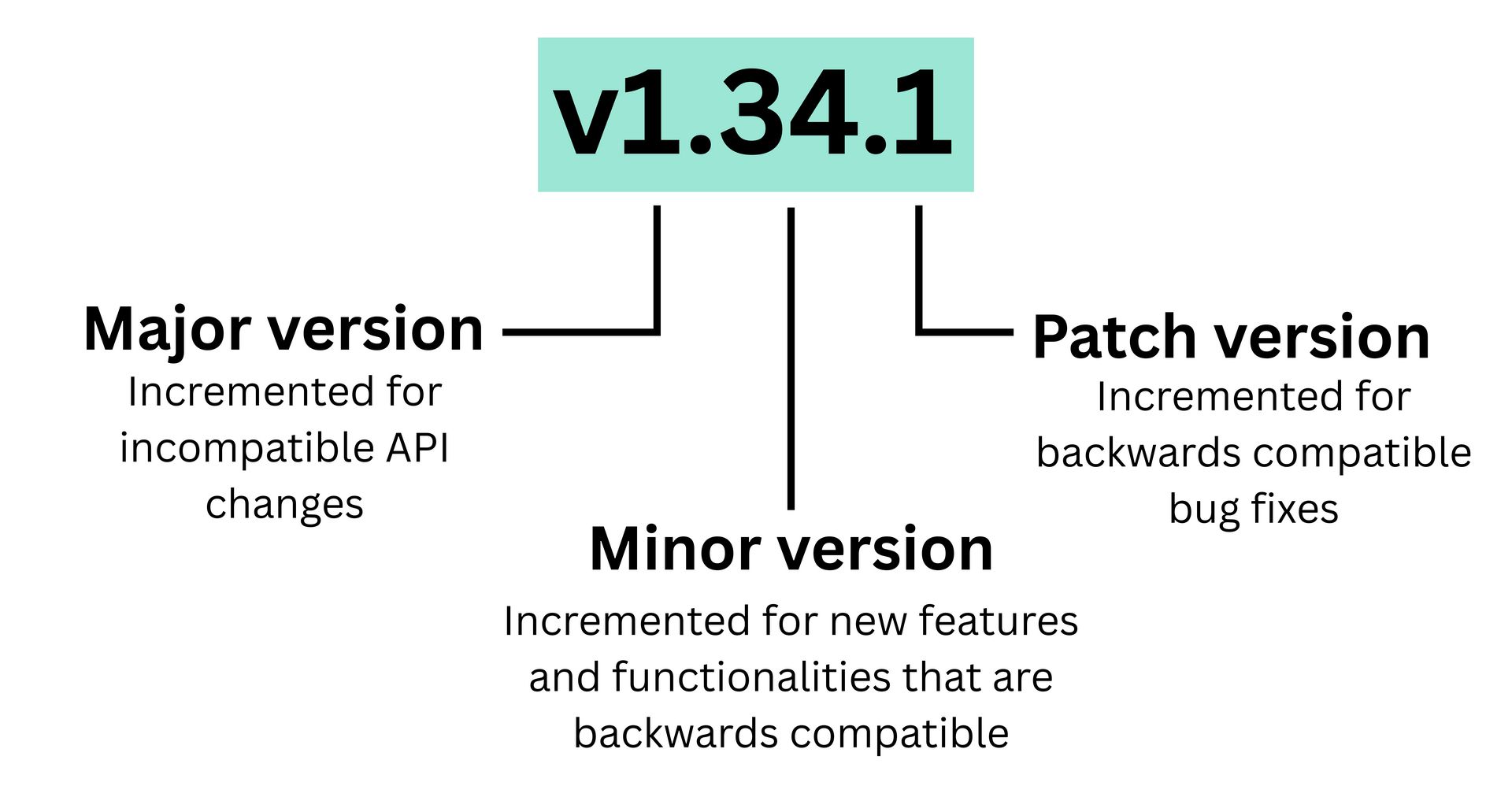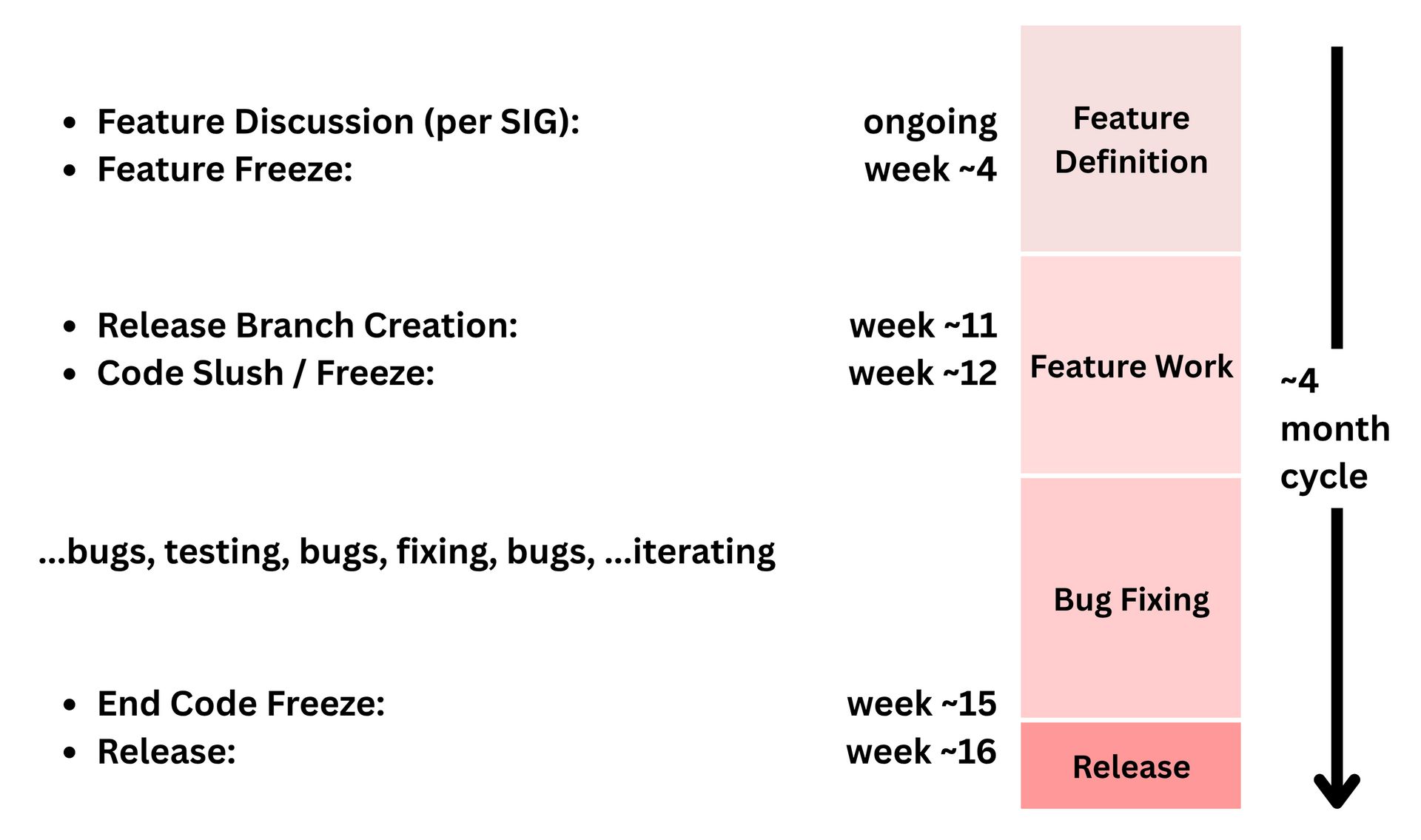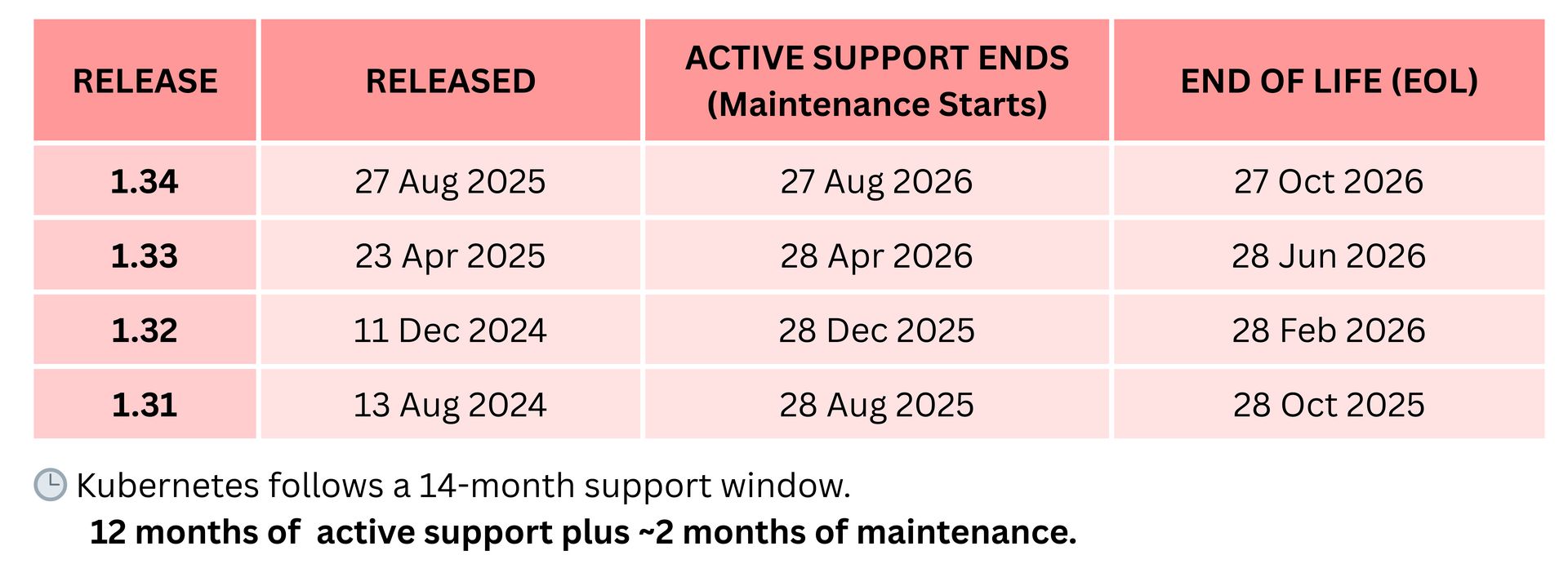- TechOps Examples
- Posts
- Understanding the Kubernetes Release Cycle and How to Prepare for EOL
Understanding the Kubernetes Release Cycle and How to Prepare for EOL
TechOps Examples
Hey — It's Govardhana MK 👋
Welcome to another technical edition.
Every Tuesday – You’ll receive a free edition with a byte-size use case, remote job opportunities, top news, tools, and articles.
Every Thursday and Saturday – You’ll receive a special edition with a deep dive use case, remote job opportunities and articles.
👋 [HANDS ON WORKSHOP] Build Production-Ready AI Agents on Kubernetes
Tired of fragile AI agent deployments?
Enter Kagent! ! CNCF sandbox project that brings Kubernetes-native simplicity to AI agent orchestration.
In this live hands on workshop, you’ll learn from the builders themselves how to deploy, configure, and scale production-ready agents.
Featuring:
Eitan Yarmush • Michael Levan • Anton Weiss
Ideal for: Platform engineers, SREs, and DevOps teams who want automation that actually works.
IN TODAY'S EDITION
🧠 Use Case
Understanding the Kubernetes Release Cycle and How to Prepare for EOL
👀 Remote Jobs
Kyivstar is hiring a MLOps Engineer
Remote Location: Worldwide
Binance is hiring a Senior Site Reliability Engineer
Remote Location: India
📚️ Resources
If you’re not a subscriber, here’s what you missed last week.
To receive all the full articles and support TechOps Examples, consider subscribing:
🛠️ TOOL OF THE DAY
Kubewall - Single Binary Kubernetes Dashboard with Multi-Cluster Management & AI Integration. (OpenAI / Claude 4 / Gemini / DeepSeek / OpenRouter / Ollama / Qwen / LMStudio)
🧠 USE CASE
Understanding the Kubernetes Release Cycle and How to Prepare for EOL
Kubernetes moves fast. Every few months, there’s a new release waiting to be tested and deployed. Teams often find themselves balancing upgrades with daily operations. One delay turns into another, and before they know it, the version they run is nearing end of life. The pressure builds quietly.
Each release needs planning, testing, and coordination across tools and environments. It’s not the upgrades that tire teams, it’s the constant chase to keep everything in sync. Kubernetes follows semantic versioning. Each release has three parts: major, minor, and patch.

Major version – changes that may break existing APIs or setups
Minor version – new features added without breaking what already works
Patch version – small fixes or improvements to make things stable
Kubernetes runs on a predictable four month release cycle.

Kubernetes release cycle
The timeline of most recent Kubernetes versions looks like this. Around 12 months of active support followed by 2 months of maintenance before it reaches end of life.

Missing this window means running a version with no patches, no fixes, and no support.
What is the Version Skew Policy ?
Kubernetes has a version skew policy that defines how far apart versions can be between components. It helps keep clusters stable during upgrades.
kube-apiserver – Always the highest version (for example, v1.34). All other components should match or be one minor version lower.
Controller Manager / Scheduler / Cloud Controller – Can be one minor version lower than the API server (v1.33 if API server is v1.34).
kubelet – Can lag by one minor version at most (v1.33 with v1.34 control plane). Never newer than the API server.
kubectl – Can be one minor version ahead or behind the API server (works safely from v1.33 to v1.35 with v1.34 clusters).
Where Can You Get the Latest Version of Kubernetes?
How to Prepare for EOL (End of Life)
Track Your Current Version
Check your cluster version withkubectl version --short. Compare it against the Kubernetes Releases page to see when support ends.Plan Two Upgrades Ahead
Always keep your cluster within two minor versions of the latest release. This avoids rushed, multi-version jumps later.Use a Staging Cluster
Test upgrades in a non-production environment first. Validate workloads, controllers, and CRDs for compatibility.Read Deprecation Notes
Review the “Deprecations and Removals” section in the release notes. Many breakages come from ignored API changes.Update Add-ons and Tools
Ensure CNI plugins, Ingress controllers, Helm charts, and monitoring tools match your target version.Automate Upgrade Checks
Use tools likekubeadm upgrade planor managed service dashboards (EKS, GKE, AKS) to schedule and track upgrade timelines.
Keeping upgrades small and steady makes EOL planning part of regular maintenance, not a last minute crisis.
🔴 Get my DevOps & Kubernetes ebooks! (free for Premium Club and Personal Tier newsletter subscribers)
